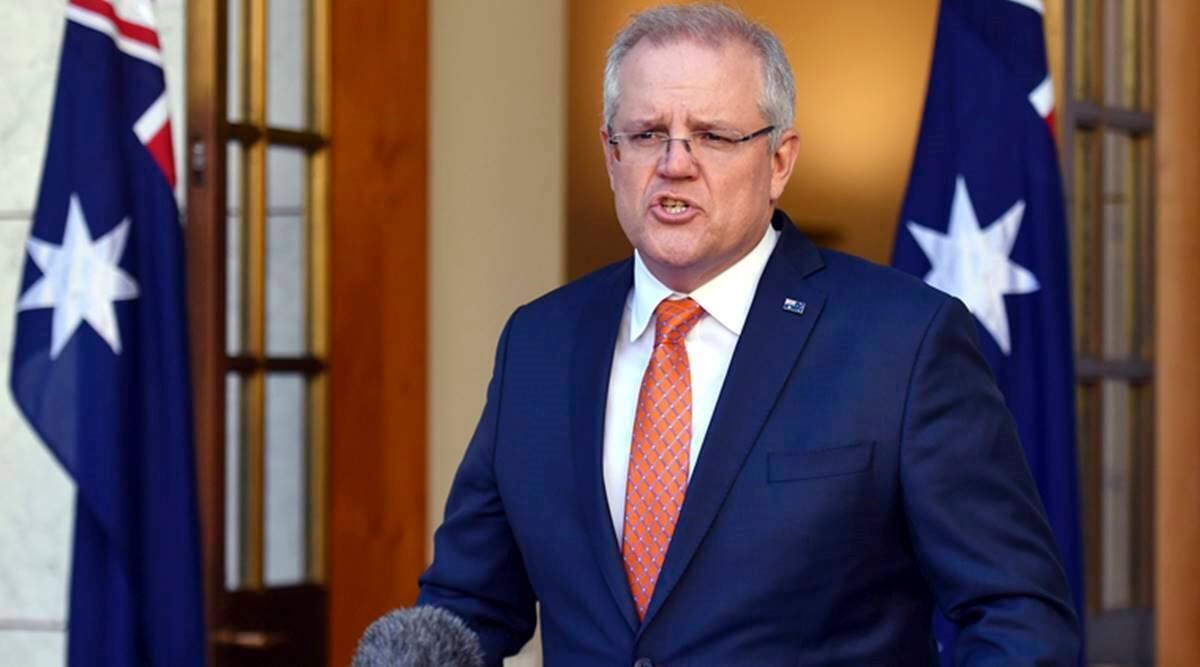

To meet a 2050 net-zero carbon emissions target, Australia is banking on existing technology and unproven innovations. Prime Minister Scott Morrison will carry the pledge to the UN's COP26 climate meeting in Glasgow, which begins on Sunday.

Despite worldwide pressure to do more in the coming decade to reduce global temperature rises, Australia will not change its 2030 targets. Instead, the administration announced fresh predictions suggesting that by the end of the decade, the country will have reduced its emissions by 30 to 35% compared to 2005 levels. This exceeds the current target of 26 to 28% but falls well short of countries like the United States, which has vowed a reduction of 50 to 52%. Mr Morrison stated on Tuesday that the government's ambition to achieve carbon neutrality by 2050 is based on current policies.
After a 20% reduction in emissions since 2005, the remaining 80% will be based on a technological roadmap. Out of the different types of technologies that will be used to reduce carbon emission, low-emission aluminium or low carbon aluminium is one of them. Around 21% of global greenhouse gas (GHG) emissions are the result of the emissions from the industrial sectors, out of which the aluminium industry accounts for 1%. On average, both raw and recycled aluminium releases 11.5 tonnes of carbon. These low carbon aluminium are produced using 100% renewable energy and is a more sustainable approach in reducing carbon emission into the atmosphere.
Other technologies that will be used to achieve the net-zero carbon emissions target are energy storage, use of low emission steel, carbon capture and storage, soil carbon, and ultra-low-cost solar along with clean hydrogen. By 2030, the government plans to invest $20 billion in low-emission technology. Over the same time span, between $60 billion and $100 billion in public-private investments are projected.
By 2050, global technological trends are estimated to contribute to 15% of emissions reductions, with international and domestic offsets accounting for the remaining 10% to 20%. Technology developments are likely to add another 15% to the total. Methane-reducing cattle feed, low-emissions cement, more efficient solar panels, and software, according to Energy Minister Angus Taylor, might all fit into this category. The prime minister stated that the aim would not be accompanied by any law or mandates.
"It will not increase energy bills. It is not a revolution but a careful evolution to take advantage of changes in our markets," said Scott Morrison.
From 2023 onwards, the Productivity Commission will assess the socio-economic effect of climate action on regional communities every five years. Mr Morrison stated that he will "eventually" present a plan that would preserve promising jobs, regions, and sectors. In comparison to inactivity, the plan estimates that people would be $2000 better off in 2050, and it proposes the development of 62,000 new jobs in area mining and heavy industries. It also predicts a 1.6% increase in gross national income and no increase in power bills. The proposal is a ruse, according to Opposition Leader Anthony Albanese, who accuses the coalition of having net-zero modelling, net-zero legislation, and net-zero unity.
"The word 'plan' doesn't constitute a plan, no matter how often you say it and what font it is printed in," said Anthony Albanese.
Chris Bowen, the Labor Party's climate spokesperson, said he had seen additional information on fortune cookies. The ALP has stated that it will release a 2050 emissions reduction plan before the election but has not stated whether or not it will put a 2030 target before voters. Because of Australia's reliance on coal and other emissions-intensive industries, UK Prime Minister Boris Johnson praised the promise as heroic. His country is hosting the COP26 meeting, where several countries are anticipated to take more aggressive climate-change action by 2030.
Apart from Resources Minister Keith Pitt's return to cabinet, it's unclear what concessions the Nationals received in exchange for accepting a 2050 objective. Some Nationals backbenchers, including Queensland senator Matt Canavan, have promised to continue fighting the idea. There is worry inside the coalition that conservative parties such as Pauline Hanson's One Nation and Clive Palmer's United Australia Party may gain votes.



Responses






